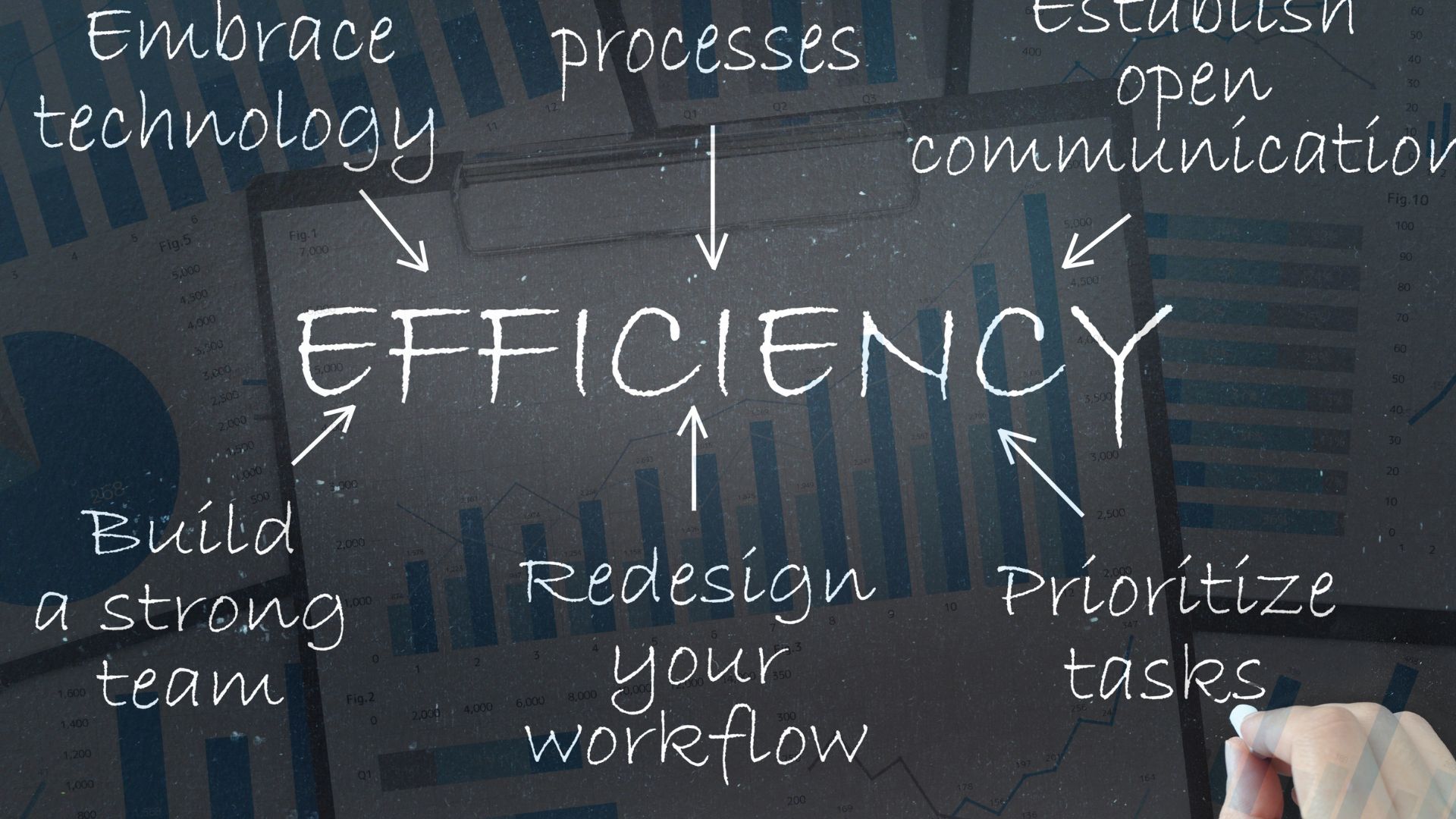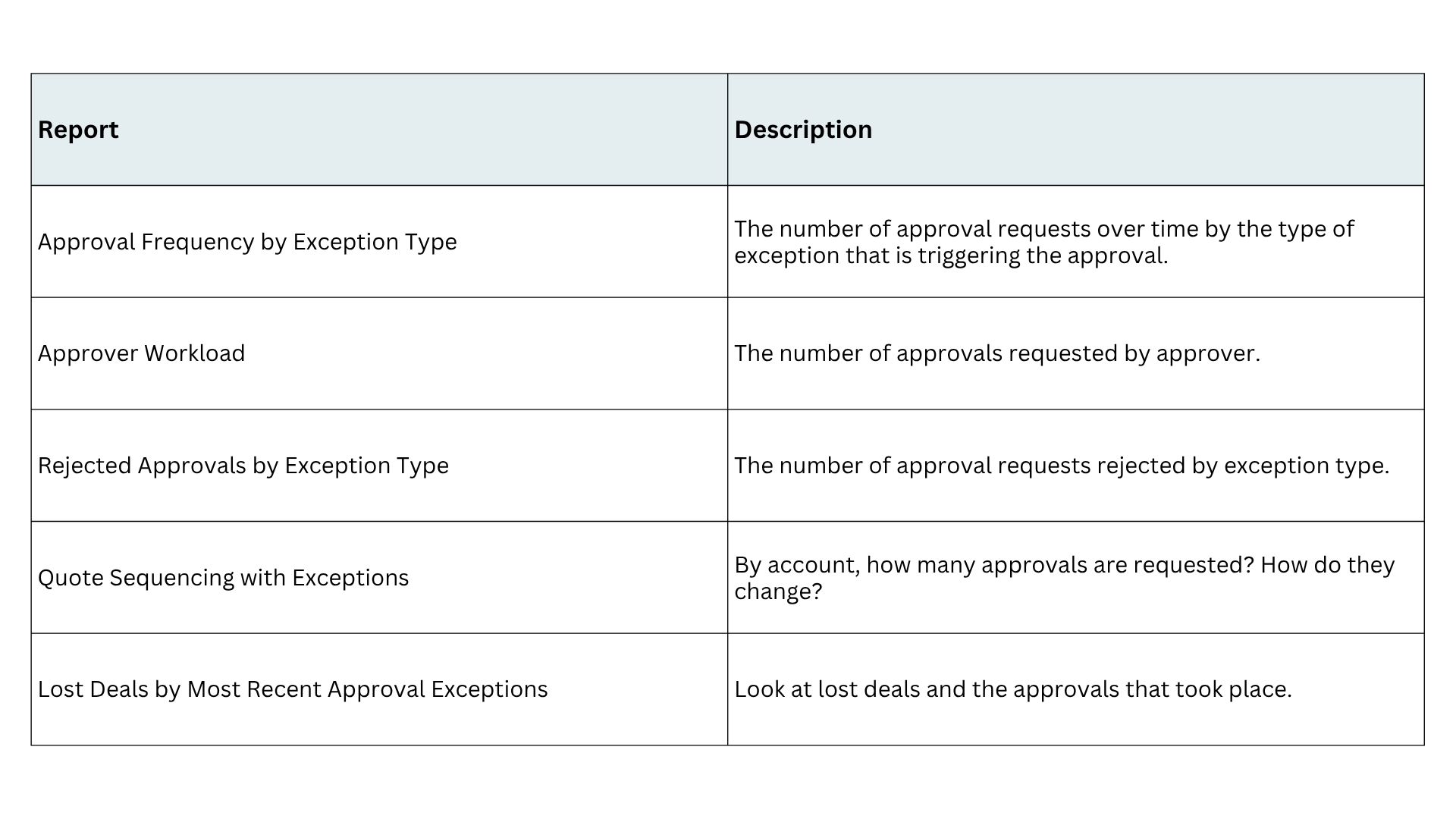

Welcome to article four of four in our order and quote exception approval series, brought to you by Nue! We’ve tapped into decades of experience to bring you approval best practices we see across sales-led B2B organizations.
These articles are more like modules than chapters—jump in wherever you need, or read the full series to unlock your inner RevOps architect.
Here’s a quick guide to the series:
Yes, we know most teams stop fussing over approvals once the complaints have died down, but they’re missing a huge opportunity to improve efficiency and sales.
By studying product pricing patterns, approval requests over time, and how your sales team is strategically pitching pricing through multiple quotes, RevOps can make business-impacting recommendations around packaging, pricing, and enablement to reduce friction and increase sales at scale.
Most teams stop at “approved” — smart teams learn from it.
Let’s talk about how to slice and dice quote data. Some of these metrics will be useful when triaging issues with your workflows, but some are meant to highlight patterns that signal a product packaging issue.

Some of these reports should be available using a custom report type. Quote sequencing is likely something you’ll need to either build the infrastructure for in your CRM using a combination of flows and Apex or export to a data analytics platform/visualization tool – or with a purpose-built tool.
Get creative and layer on segments, regions, and manager data to figure out how teams are being coached and whether they may be running into unique issues compared to their counterparts.
The data is just the starting point. When a pattern emerges, that’s your signal to dig deeper and gather enough context to understand why the number is shifting. This often means analyzing specific examples and talking directly with the people involved—requesters, approvers, and managers—to get to the root of what’s driving the trend.
Below are a few examples of how we’d combine reporting with conversations to uncover what’s really going on—and how to act on it:
Example 1:
Start by identifying the most frequently requested approvals. Then, layer on whether those requests are being approved or rejected. Break it down by team to see if some groups aren’t being coached properly—or if they’re unclear on which approvals are more likely to get greenlit by leadership.
Let’s say you speak with your CFO and learn that professional services have razor-thin margins. If reps are applying discounts evenly across software and services, those requests might be getting denied—even when the total discount is reasonable. The CFO might confirm that the same dollar discount would likely be approved if applied to the software line, while keeping professional services at 80–100% of list price.
That’s a valuable insight your sales team should have before they build the quote.
Example 2:
Are certain exception types being triggered so often that it’s time to rethink how your bundles or contracts are structured?
For example, you notice that onboarding and support SKUs are frequently removed from bundles in favor of a newer “Global Services” product. That’s a great time to loop in your product team and CFO to evaluate whether the existing bundles should be updated to reflect current buying patterns—rather than forcing reps to wait for an approval to be processed.
Example 1:
In last week’s article on fixing approval issues, we explored how to spot overburdened (or inattentive) approvers. This report is often where those clues begin.
Like in last week’s example, you’ll want to meet with each approver to uncover what’s slowing them down—or speeding them up. In one case, the CFO was simply too booked in meetings to keep pace with requests. Another manager, who was constantly on sales calls, relied on her team to text her about urgent approvals.
Both are solvable—but require different strategies. For the CFO, creating an approval queue and training a delegate for high-volume periods might be the fix.
Example 2:
You notice some approvers breeze through requests in minutes. To assess whether that’s a red flag or just efficiency, add layers: quote size, company segment, and territory.
If the CFO signs off and agrees these approvals don’t need review, it’s time to conditionally suppress those triggers. But if they don’t approve of the fast-tracking? That’s not your battle—point the CFO to the manager in question. If they try to delegate that conversation to you, remind them: you may not have positional authority to change a manager’s behavior, but they do.
Rejected approvals tell a story—especially when you overlay how close the request was to quarter-end. Now compare those with similar exceptions that were approved.

You’ll often see a spike in rejected approvals near the end of a tough quarter. That’s not surprising. But if you cross-reference with win rates for similar deals, you may uncover something more important.

For example:
If the same five companies get approached over and over and they hold out until quarter end, they may know your fiscal calendar—and exactly when to expect bigger discounts.
If the type of companies changes each quarter, but win rates increase after price drops, you may have a product quality perception problem.
Either way, it’s a cue to talk to your CFO. If buyers only convert when prices nosedive, your product may not be priced in line with its perceived value.
One effective way to use this report type is to analyze whether exception types—like a software discount—stay consistent throughout the negotiation or escalate over time. For example, a deal might start with a 10% discount and end with a 25% one as the quarter comes to a close.
It’s equally important to compare how different sellers handle these exceptions. Are the deals that close carrying similar discount levels? Or are some reps starting too low and giving up too much margin by the end?
Let’s look at three sellers to illustrate the point:

Bazooka closes the most deals—but also offers the steepest discounts. That might be fine if he’s selling to SMBs, where smaller deal sizes justify more flexibility. But in this case, he’s selling mid-market. A quick profit margin analysis shows he’s giving away significantly more than his peers—and it’s cutting into both margin and commissions.
Joe maintains the best margin, but the volume of quotes he sends out is costing him time—and deals. On average, he loses one more deal per quarter than his peers. Compared to Mary’s performance, his extra quoting effort just isn’t paying off.
Mary hits the sweet spot: fewer quotes, steady margin, solid close rate.
In this scenario, RevOps should package these insights for enablement. Use Mary’s approach to build a negotiation playbook and help Joe and Bazooka protect more margin—while improving their win rates and commissions.
That’s what we call a win-win.
In our experience, these are additional patterns worth watching—and what they could signal. (Of course, interpretation will vary based on your GTM strategy and profit margins.)
If the same SKU is being discounted repeatedly, it could mean your sales team has figured out where the margin “give” is by product—which isn’t necessarily a bad thing. But it could also be a sign that the product is mispriced.
It’s not uncommon for there to be a disconnect between the value your product team believes a new feature offers and what customers actually experience.
No one loves delivering tough feedback, but if you can validate it through your customer success team—or, better yet, directly from your customers—you’ll have the ammunition needed to adjust pricing to reflect real-world value.
If the same product is consistently removed from a bundle, something’s off.
Either way, it’s worth investigating.
In early-stage companies, it’s common to bake in marketing asks—like testimonials or logo use—in exchange for a discount. But if more than half of your customers are removing those clauses during redlines, it’s time to flip the script.
Instead of forcing the clause into contracts, wait for customers to opt in to the exchange. Otherwise, you’re creating friction where there should be flexibility.
Few things stall a deal faster than waiting on legal—especially for common or low-risk changes.
If you notice these delays cropping up consistently, it may be time to:
If legal’s pace is a bottleneck, the business needs to fix it—fast.
You don’t need to show sales your product margins. (In fact, please don’t.) But sometimes, you do need to explain why certain products can’t absorb deep discounts—even if others can.
If reps are regularly requesting blanket discounts across bundles and getting rejected, work with your CFO to create clear, rep-friendly guidance. Help them understand where discounts are acceptable and where they’re not—without compromising profitability.
The goal: protect your margins and your sales team’s ability to compete.
Most teams treat approvals like a necessary evil—something to suffer through until the deal gets done. But the most strategic RevOps teams know better.
Approvals are a goldmine of insights.
When you start tracking exception patterns, quote sequencing, and approval bottlenecks across teams, regions, and reps, you uncover the root causes behind deal friction. You also unlock opportunities to influence pricing, packaging, enablement, and even how legal and finance teams engage in the sales cycle.
This isn’t just about fixing slow workflows. It’s about building smarter ones that evolve with the business—and help shape it.
So don’t stop at “approved.”
Look deeper. Find the friction. And bring your data to the people who can do something about it.
Because when RevOps leads the loop-closing conversation, everybody wins.
Tired of fighting through approval issues alone? Streamline and automate complex approvals without custom coding with Nue’s Approval Pro. Learn how it compares to Salesforce Standard and Advanced Approvals by clicking here.
